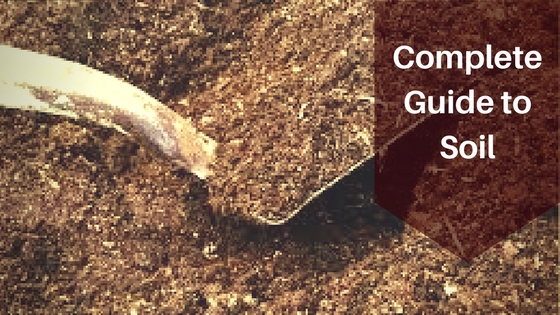Good, quality soil is the foundation of growing anything, whether it is grass, plants, shrubs, trees, or flowers. Understanding the components of quality soil is important to figuring out how to reverse the damage of urbanization, where your soil becomes weak over the years and no longer loaded with the right nutrients for your plants.
Figuring out what makes good soil is an important part of growing strong grass and vibrant flowers. This post will help explain to you how to identify good soil, and the components of it.
Essential Soil Nutrients
Plants need water and sunlight to grow. they get a large part of their nutrients through their roots from the soil. These substances must be dissolved in moisture, therefore, water is so important for plants.
The 17 essential nutrients of soil are:
- carbon C,a nutrient important to overall plant growth;
- hydrogen H,not important for plants, but a sign of good soil;
- oxygen O,plant roots need to draw oxygen from the soil for growth;
- nitrogen N,a major component of chlorophyll, that plants need to convert sunlight;
- phosphorus P,part of the acid structure that regulates photosynthesis;
- potassium K,required for growth and reproduction;
- sulfur S,acts as a soil conditioner and reduces the sodium in the soil;
- calcium Ca,reduces soil salinity and improves water penetration;
- magnesium Mg,another essential building block of chlorophyll;
- iron Fe,part of chlorophyll and is required for some enzyme functions;
- boron B,provides structural integrity to cell walls;
- manganese Mn,plays a key role in photosynthesis in plants;
- copper Cu,important for straw strength, which is the plants ability to stand on it’s own;
- zinc Zn,a key nutrient in growth hormone production;
- molybdenum Mo,a catalyst for enzyme activities in plants;
- nickel Ni, a component of enzymes to keep the plant from turning necrotic;
- chlorine Cl, a micro-nutrient required for plant growth.
Why is calcium so important?
The following properties is why calcium is important for your garden:
- Neutralizes acid.
- Deteriorating growth conditions for moss.
- Brings life to the ground.
- Makes heavy clay looser.
- Lime is plant food.
- Makes other nutrients from the soil available to plants.
- Reduces pests.
- Promotes fruiting and ripening of fruits.
Different Types of Soil Texture
Soil texture is defined as the size distribution of different mineral particles. These mineral particles are at their most basic level the following: sand, silt and clay. Sand particles are 2 to 0.05 mm diameter, silt particles are 0.05 to 0.002 mm diameter and clay particles are less than 0.002 mm diameter. Combination of these particles exhibit different properties in soil and some combinations favour plant life better than others. The following are the most common classes of soil texture:
Clay soil
Contains a high percentage of clay particles and feels lumpy to the touch. The small size of the clay particles means that they clump together quite readily and there is less room for air spaces. Consequently clay soils have poor drainage and do not hold nutrients very well. This is a heavy soil and is sticky when wet making it hard to work with. As much as possible you should take steps to improve the drainage of this type of soil. You will learn how later on in this article.
Silty soil
Contains a high percentage of silt particles and feels smooth to the touch. This soil is a well drained soil due to the size of the particles allowing space for water to permeate. This soil holds nutrients more readily than clay soil due to the spaces. It is easy to cultivate but can be compacted quite easily.
Sandy soil
Contains a high percentage of sand particles and feels gritty to the touch, Allows for quite a lot of space in between particles and as a result is very free draining. This has its disadvantages however as it does not hold water and essential nutrients can get washed away.
Loamy soil
This is the best type of soil texture you can have in your garden. This is soil whose properties are controlled equally by the percentages of clay, silt and sand particles. It is well drained but does not loose water too easily as is the case with sandy and sometimes silty soils. The fact that it retains water means it also retains nutrients for your plants to use. It has a great structure and is easy to cultivate.
Humus an important component of soil
Humus is a rich, mixture within soil. Many people think it is a layer of soil, or a type of soil, but it isn’t any of that. Humus is the carbon rich remains, after the organic components within soil break down. It is an essential component with quality soil, as it helps retain water within the soil, essentially 90% of it’s weight in water.
Humus is negatively charged, so it helps gather and retain the nutrients plants need for proper growth and enzyme production, sort of like a sponge. As plant roots come in contact with the humus sponge, it is able to extract the nutrients. This process is a bit more complicated, but it is best to think of humus as a slow release fertilizer, except without any chemicals.
Besides the nutrient sponge properties of humus, it also causes aggregation of the soil, which allows the soil to be less clumpy, and completely improves the soil structure. Humus rich soil allows the plant roots to freely move within the soil, and gives them easy access to water, nutrients, and oxygen.
To learn more about different types of soil, check out this post

Understanding Soil Structure
A good soil structure is crumbly with many passages and cavities, so that the plant roots can freely move within them and reach all the needed nutrients.
Factors that can deteriorate or destroy soil structure include, for example:
- Compaction
- Cultivation
- Removal of vegetation
- Excessive moving and handling of soil
- Screening
- Excessive sodium
The acidity of soil
Soil acidity (and acidity of anything else, for that matter) is measured on a scale of 1 to 14. Everything below 7 is considered to be acidic. Everything above is considered to be alkaline. Most garden plants thrive at a pH between 6 and 7.5.
Is your soil less acidic? It is richer in calcium. Give it an acidic soil lime fertilizer, especially clay soil it is needed. Lets examine your ground and take action if necessary.
Soil analysis
Perform a soil analysis every few years. Compose the soil sample by collecting some soil at different places in your garden. Use a self-test or have a sample tested every few years after fertilizing early in the year.
To learn more about conducting a soil analysis, check out this post.



Comments are closed, but trackbacks and pingbacks are open.